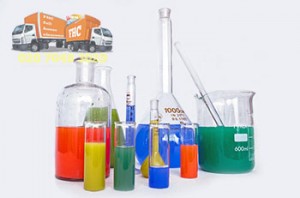For businesses and governments, waste is becoming an ever increasing and important source of useful chemicals, materials and fuels. Prior to using waste as source of useful materials, such were only or mostly available through the petrochemical industry. However as paradigms are shifting, new opportunities are seized and recycling is finally having its true value recognised and appreciated, which also underscores the importance of effective and thorough rubbish removal and disposal practices on all levels.
 Recently, biowastes represent a source of many valuable compounds and simple chemicals which could be derived through recycling. However, such useful substances and chemicals are in low concentration and usually diluted amongst other non-useful ones. This calls for the development and implementation of efficient biowaste recycling methods, which is where universities and R&D organisations come in. At the moment, the University of York has put together two internationally recognised research groups tasked with the process of developing a viable technology which converts plant matter and biowaste into useful and valuable chemicals.
Recently, biowastes represent a source of many valuable compounds and simple chemicals which could be derived through recycling. However, such useful substances and chemicals are in low concentration and usually diluted amongst other non-useful ones. This calls for the development and implementation of efficient biowaste recycling methods, which is where universities and R&D organisations come in. At the moment, the University of York has put together two internationally recognised research groups tasked with the process of developing a viable technology which converts plant matter and biowaste into useful and valuable chemicals.
What makes the research process even more interesting and important is that everything is also open for actual chemical companies and manufacturers to contribute, meaning that the program is a joint effort between industry and science. The University side of the research program has built up on the existing and effective chemical recycling methods of milling, pelletising and macerating with advanced technology like fibre expansion and CO2 extraction from different types of biowaste. Some of the other types of recycling suggested by the scientists include low temperature microwave pyrolysis and spinning cone distillation. At the moment, the research program is a non-profit venture initiated by the University of York and aiming at providing the industry with the best means possible of recycling plant matter and biowaste into useful chemicals.
The work done at the University of York could be ground breaking, but the concept is not. Efforts to recycle chemicals from biowaste began many years ago. One of the best examples is starch – it is used for more non-food purposes that food ones, showing how important such efforts really are. Official statistics by the International Energy Agency show that about fifty million tons of polymers and chemicals are produced by the recycling of biowaste and plants. These, combined with high value fermentation products like amino acids, antibiotics and vitamins, bring the total market worth of chemicals produced in this way to a total of twenty two billion Euro.
In terms of bulk chemicals produced by recycling of plants and biowastes, the situation is also a favourable one. Since twenty ten, the annual compounded rate of bulk chemicals derived from waste has been growing at a decent rate, totalling their market value at about two and a half billion Euro. It is expected for the trend to continue, so projecting the model in future would mean that about forty percent of all bulk chemicals will be produced through recycling by the twenty fifty. Large companies are investing heavily in construction of extensive biowaste treatment and recycling facilities, recognising the importance and profitability of such installations in future.



